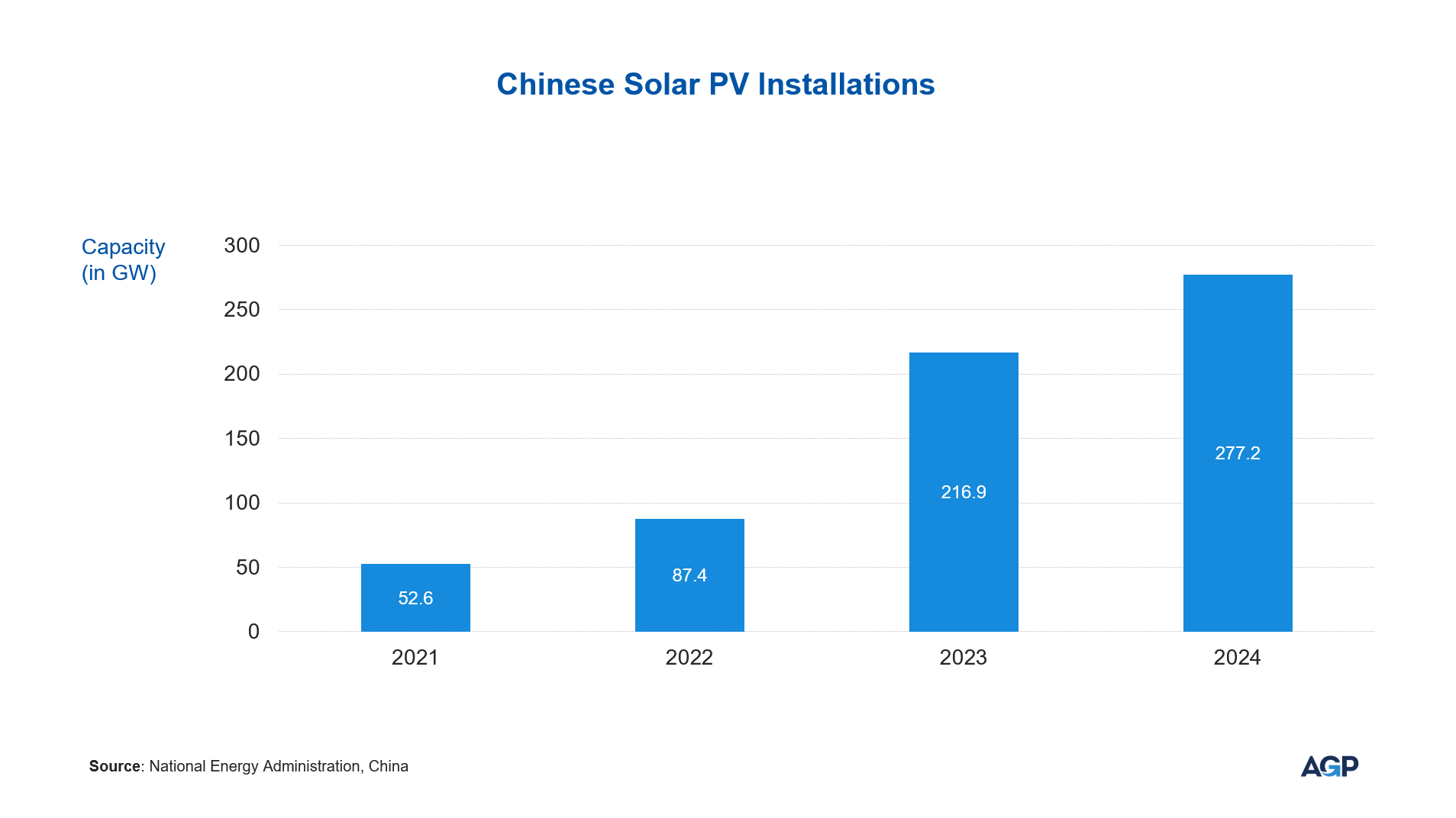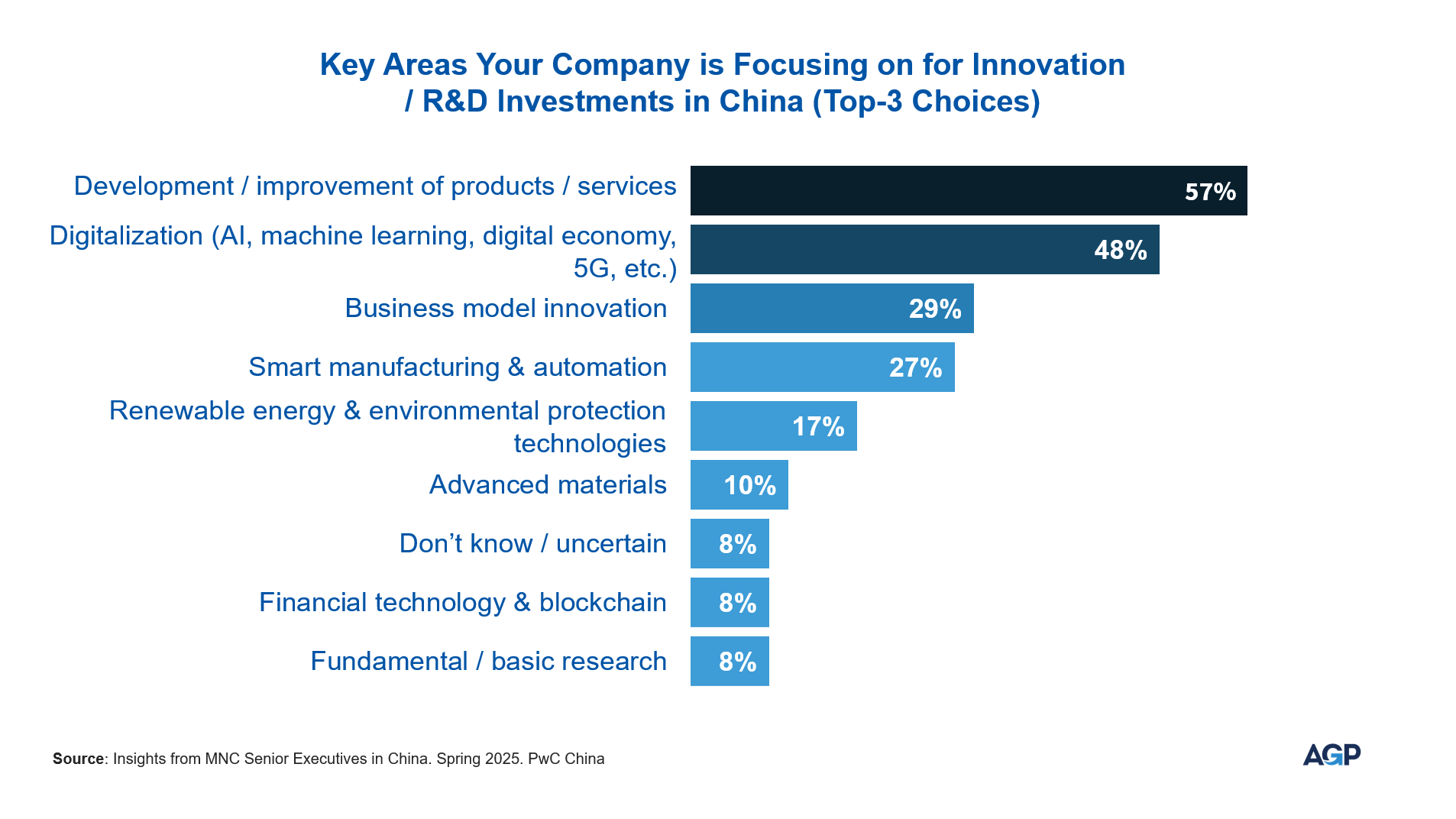China's Green Shift: Implications for MNCs Innovation Strategies
In March 2025, the National Development and Reform Commission (NDRC) announced plans for substantial investments in new offshore wind farms and expansive clean energy hubs integrating both solar and wind technologies.
China's rapid shift toward sustainability and green innovation is transforming its economy and redefining global business strategies.
China's commitment to sustainability and green innovation provides an expansive landscape for MNCs to innovate, compete, and grow.
Understanding China's Green Transformation
China's advancement draws global attention because of its unique dual role—as the largest emitter, contributing roughly 30 percent of global emissions, and simultaneously the leading investor in renewable energy technologies.
China's commitment to sustainability is embedded in its recent Five-Year Plan, underpinned by ambitious targets for carbon neutrality by 2060 and peak emissions before 2030. The shift from high-emission industries toward renewable energy, sustainable manufacturing, electric mobility, and green technologies underscores China's strategy to position itself as a global leader in sustainability.
China has invested heavily in renewable energy, becoming the world's largest investor in solar, wind, and battery technologies. In 2024 alone, China installed over 277.2 GW of solar capacity, according to China's National Energy Administration, significantly outpacing other global economies. Concurrently, advancements in battery technology and electric vehicle (EV) production have established China as a leading market for electric mobility, surpassing traditional automotive powerhouses.

However, recent data suggests that China is facing challenges in meeting its emissions targets (outlined by the Chinese government in its latest five-year plan, aiming to reduce carbon intensity by 18% between 2020 and 2025). In 2024, China's carbon intensity declined by 3.1 percent, falling short of the official target of 3.9 percent set by Beijing, according to China's National Bureau of Statistics.
This underperformance highlights the complexity of China's green transition and the need for continued efforts and innovation to achieve its ambitious goals.
Opportunity Identification in Green Technologies
For innovation and R&D leaders at MNCs, China's sustainability pivot presents considerable opportunities. Companies could benefit from leveraging their global development capabilities to identify, invest in, and scale promising green technologies emerging from China. This approach may offer valuable opportunities for innovation and growth in the sustainable technology sector.
For instance, innovations in battery storage, renewable energy infrastructure, carbon capture, and hydrogen technologies are increasingly areas of intense activity and offer significant potential for global application.
A recent survey from PwC China (January 2025) indicates that 57% of MNCs are focusing their innovation and R&D investments in China on the development and improvement of products and services; 48% are prioritizing digitalization technologies such as AI, machine learning, and 5G; 29% are focused on business model innovation; and 27% on smart manufacturing.

Adapting to Regulatory Changes
China-based executives, including regional heads and country managers, may find it beneficial to strategically navigate evolving regulatory landscapes. This approach can help them adapt to changing business environments and maintain compliance with local regulations at an adequate pace.
To address this effectively, consider implementing the following approaches:
1. Establish Real-Time Regulatory Monitoring Systems
- Policy Intelligence Units: Create dedicated teams to track updates from agencies like the Ministry of Ecology and Environment (MEE) and the National Development and Reform Commission (NDRC). For example, China’s 2024 mandate requiring 83,000 large emitters to disclose environmental data necessitates continuous monitoring to avoid compliance risks.
- AI-Driven Regulatory Dashboards: Digital technologies such as AI-driven energy management, IoT-enabled sustainable manufacturing, and blockchain-based supply chain transparency are key areas where China's accelerated digital transformation intersects with its sustainability agenda. Deploy tools that use machine learning to flag policy changes and subsidy opportunities in real-time.
2. Proactive Policymaker Engagement
Participate in provincial-level green transition pilot programs. Siemens, for instance, signed a cooperation framework agreement with the Changshu National New & High-tech Industrial Development Zone Management Committee and Suzhou Land Group in Jiangsu Province in 2021. The agreement aimed to build an advanced manufacturing and low-carbon park demonstration project, including digital enabling centers and smart park IoT operation centers (source: Siemens China).
3. Align Operations with Sustainability Objectives
- Circular Economy Integration: In April 2023, L'Oréal signed a memorandum of understanding with Alibaba to promote a circular economy in China's beauty industry. The partnership aimed to develop sustainable packaging solutions, promote recycling initiatives, and educate consumers about sustainable consumption (source: People’s Daily).
- Digital Compliance Tools: Consider implementing blockchain-enabled supply chain tracking (e.g., Walmart China’s pork and other products’ traceability system, announced in 2019 and implemented in subsequent years) to meet ESG disclosure requirements.
Collaborative Innovation Ecosystems
Enormous value can be gained by recognizing the importance of collaboration within China's vibrant green innovation ecosystem.
Engagement strategies include partnering with Chinese universities, research institutions, innovative startups, and government-backed green initiatives. Joint ventures, collaborative R&D projects, and open innovation platforms are effective vehicles for tapping into China's vast innovation talent and resources.
For example, MNCs like Siemens and ABB have successfully partnered with Chinese entities to pioneer innovations in renewable energy management, smart grid technologies, and EV infrastructure.
Siemens has joined forces with the Tianmu Lake Institute of Advanced Energy Storage Technologies (TIES) to launch the Advanced Battery Technology Innovation Center in Liyang, China. This facility is dedicated to advancing battery technologies for electric vehicles, offering end-to-end digital solutions to support both innovation and production in next-generation battery development.
ABB collaborated with China’s State Grid Corporation to support the integration of large-scale renewable energy into the power grid. In 2020, ABB's Power Grids business secured orders to supply advanced HVDC converter transformers and high-voltage equipment for three 800 kV UHVDC transmission links in China. These links facilitate the transmission of hydro, wind, and solar power, reducing CO₂ emissions and enhancing grid reliability.
Such partnerships allow for quicker market entry, risk-sharing, and localized innovation, positioning companies at the forefront of China's sustainability drive.
Localized Innovation Centers
Establishing dedicated green innovation hubs or centers of excellence in China provides MNCs direct access to local innovation dynamics and accelerates the adaptation of global solutions to the Chinese context. These innovation centers can serve as gateways for cross-border knowledge sharing, talent attraction, and targeted innovation efforts.
Multinationals like General Electric and BASF have set benchmarks by establishing significant local R&D presences, resulting in innovations specifically tailored to the Chinese market and subsequently scaled globally.
Future Outlook
Recent policy updates and initiatives in China underscore the country's commitment to a green transition, offering long-term benefits for corporations willing to adapt and innovate within this evolving landscape.
In conclusion, the country’s green represents an opportunity that MNCs would greatly benefit from embracing. Corporations that effectively integrate China's green transformation into their strategic planning and innovation agendas may secure substantial competitive advantages, enabling them to capture new markets, drive technological advancements, and position themselves as global sustainability leader.
Related Insights.











